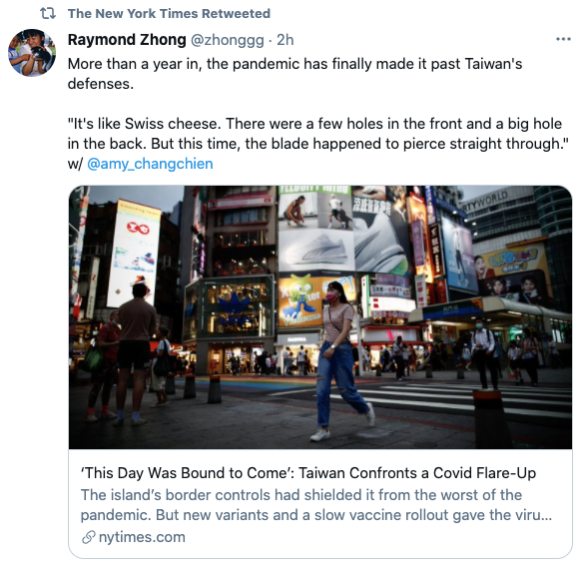How to Write Effective Headlines for Nonprofit Articles

Content marketers know the power of a good headline: it can sustain organic search traffic for years, drive viral shares on social media, and capture the attention of new audiences. However, people get their news from headlines in a way they never did in the past. According to Moz, 8 of 10 people will read a headline, but only 2 out of the 10 people will click it. To address this behavior, a good headline still needs to entice people to click, but it also must communicate an article’s message succinctly, so that even if they don’t, the point still comes across.
While clickthrough rates (CTR) are important for nonprofits and other social impact organizations, their articles — and headlines themselves — may be written with a different goal in mind. Rather than generating leads or creating urgency to drive purchases, nonprofit content often aims to increase brand awareness, spark conversations, and drive action through donations, event signups, or email newsletter subscriptions. With that nuance in mind, nonprofit article headlines may include a slightly more emotional or less promotional tone to remain on-brand. That’s why we developed the following advice for how you can write effective headlines if you’re a nonprofit marketer.
» Why a Brand Voice is Important and How to Create One
How to start writing a headline
Crafting an effective headline requires skill, empathy, and experience. It also requires time, creativity, and a willingness to iterate. Before playing with words, define the core idea of your headline.
1.Identify the most important point of the story
What’s the essence of the article? Or, more importantly: what is it actually about? Distill the core message into a simple sentence or statement, like “My article is about how nonprofits can write effective headlines.”
Avoid clickbait
Sometimes, writers or editors use a sensational headline to entice readers to click, but don’t pay off that headline with the article’s content, which leaves readers frustrated. Ensure your headline matches the information in your article so you attract engaged readers instead of empty clicks.
Ask: Why would a reader care?
Get to the nitty-gritty of why the content matters to your audience. Is it emotionally impactful and full of moving imagery? Is it packed with data insights? Fill in a prompt like “Our audience cares about this piece because _______________” to identify the key information that should make it into your headline. For example, “Nonprofits care about this piece because they want to write effective headlines that entice readers to click on their articles.”
» Learn more about our Content Strategy services
2.Tailor headlines based on how readers will find your content
Headlines can (and should) vary depending on where they will end up. According to Parse.ly, 56.5% of traffic to major sites comes from Google search, whereas about 25% comes from Facebook and Twitter combined. Most organizations rely on a cross-channel promotion to distribute their content to all their audiences, but your headlines should also keep up with that cross-channel strategy.
Is your content about a trending topic?
If you’re publishing a timely piece about a buzzworthy topic, your headline should prioritize SEO keywords. Your audience may be searching on Google or scrolling through Twitter feeds to get latest updates or perspectives about the trending topic. To capture their attention, use keywords at the beginning of your headline. Our headline for this article frontloads the words “Write Effective Headlines.”
If you don’t know what’s trending, try using Google Trends or subscribing to a daily update, like this one from Simon Rogers (a data editor at Google’s News Lab team). Following these trends will not only help you with keyword identification, but also with ideas for new pieces of content.
Is your content focused on storytelling, imagery, and/or data visualizations?
If your article is narrative-driven, especially longform, frame the headline for social media. Consider using quotes, pulling out data, or making a strong statement in your headline. When framed correctly, these stories perform well on social media and can become viral if the headline effectively taps into readers’ curiosity.

This social media headline frontloads an emotional quote about Taiwan’s Covid Flare-Up rather than potential search keywords.
» Learn more about our work with social impact organizations
Structuring successful headlines
1.Know your keywords
Considering over 50% of traffic to most sites comes from Google, there’s a good chance your headlines will need to be optimized for search engines. The easiest way to do this is frontloading your keywords.
2.The 6-word rule
A study from Kissmetrics showed that users pick out the first and last three words of a headline. That’s why we recommend keeping a headline to six words so readers can scan it and absorb key information quickly. This is another reason to frontload keywords wherever possible.
3.Get to the answer — or the question
Headlines formulated with the common question words such as who, what, where, why, and how tend to perform well. This can take the form of an answer like “How to write a strong headline” or a question like “How do you write a strong headline?”. The benefit to the latter is Google’s featured snippets. If you structure your articles with subheaders that provide answers to the question, Google understands that signal and displays it as a Featured Snippet:

This featured snippet answers the question “What Are Featured Snippets?”
4.Speak like your audience
Keywords are great, but if they’re not the same language that your audience uses, your headline won’t resonate the way you want it to. Content Design by Sarah Richards has a great example of this: rather than a green energy organization writing about “hydraulic fracturing,” search volume shows that “fracking” (which means the same thing) is a stronger keyword.
5.Use numbers or facts
Starting with numbers or data points in your headline improves the chances your audience will click through. Number psychology studies show that including a number in headlines triggers a strong psychological response. Whether you use a number for a listicle like “5 Tips to Writing Better Headlines” or to call out a data point like “How to Write Headlines That Lead to 5M Clicks”, numbers prove their strength in click-throughs.
What’s next?
You wrote your headline and you published your article. From here, there are a few options, including:
Headline A/B testing
According to Chartbeat, most headline writers only get headlines right the first time for 38% of stories. This illustrates two things:
- Write multiple versions of your headline before publishing
- A/B testing can decipher which headlines prove most effective
Consider testing variations of your headline using different strategies — one headline may feature data points while another makes a bold statement. By A/B testing and learning your audience’s preferences, you’ll learn to write more effective headlines based on data.
Revisit and optimize
If your piece doesn’t get the traction you’re expecting, consider updating your headline after sharing on various channels after a set amount of time based on your audience’s behavior and analytics.
-----------------
The right article headline can increase awareness about your nonprofit, spark important conversations, or drive people to engage with your organization. Start writing your article headlines by distilling their point and asking yourself why readers should care about their topic. Meet readers where they are with headlines featuring topics and keywords they're searching for. Leverage data, quotes, and other types of statements to pique their curiosity. And be sure to frontload your keywords, create scannable headlines, and answer questions for your audiences. Once you've written a headline, test it to learn the types that are most effective for your audiences, and apply those learnings to future headlines you write.
Velir helps nonprofits, foundations, and other social impact organizations to create and strategize content that engages their audience. Learn more about our content services or reach out to learn how we can support your organization’s content needs.



